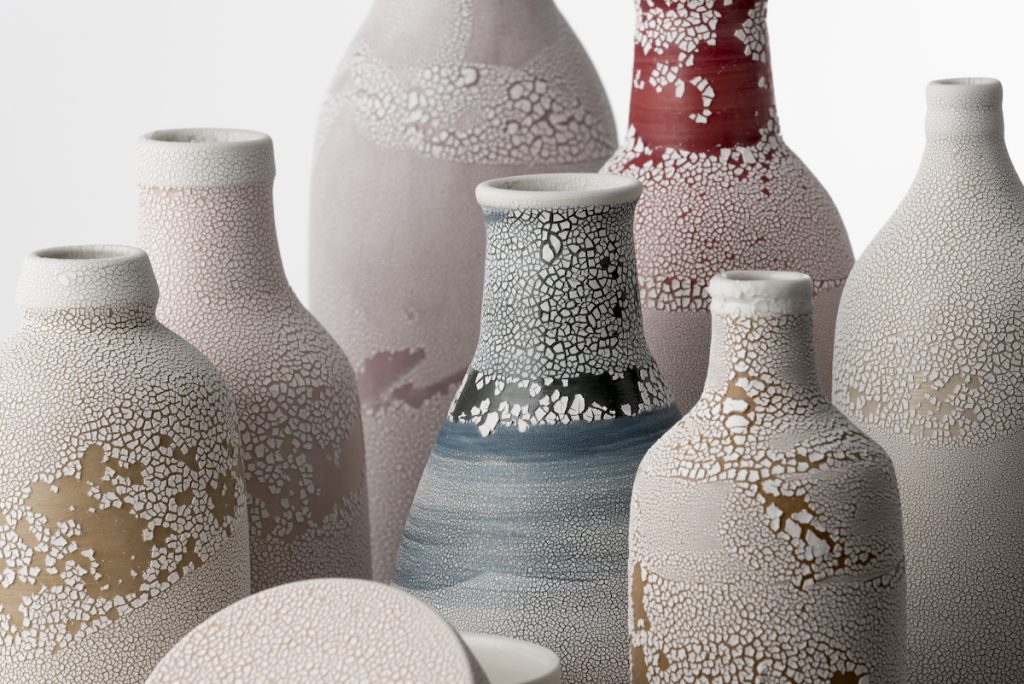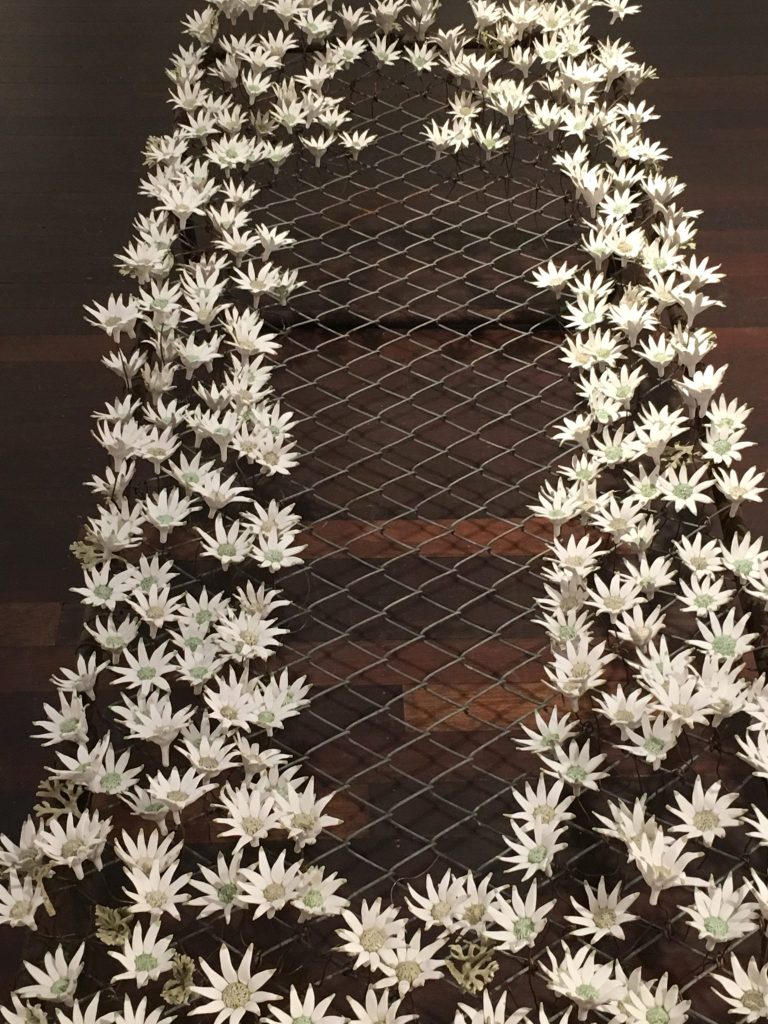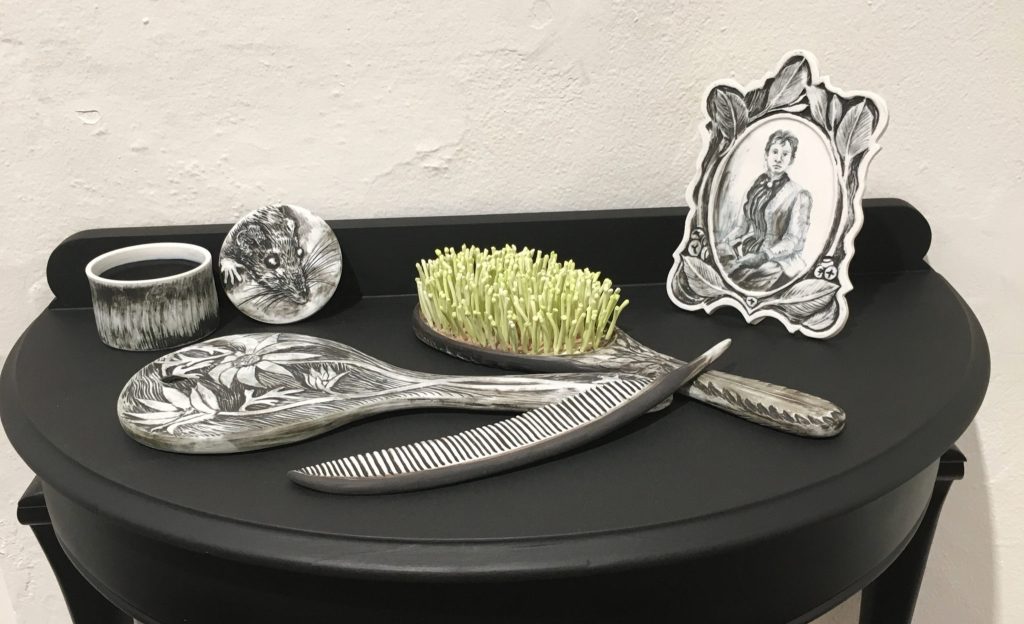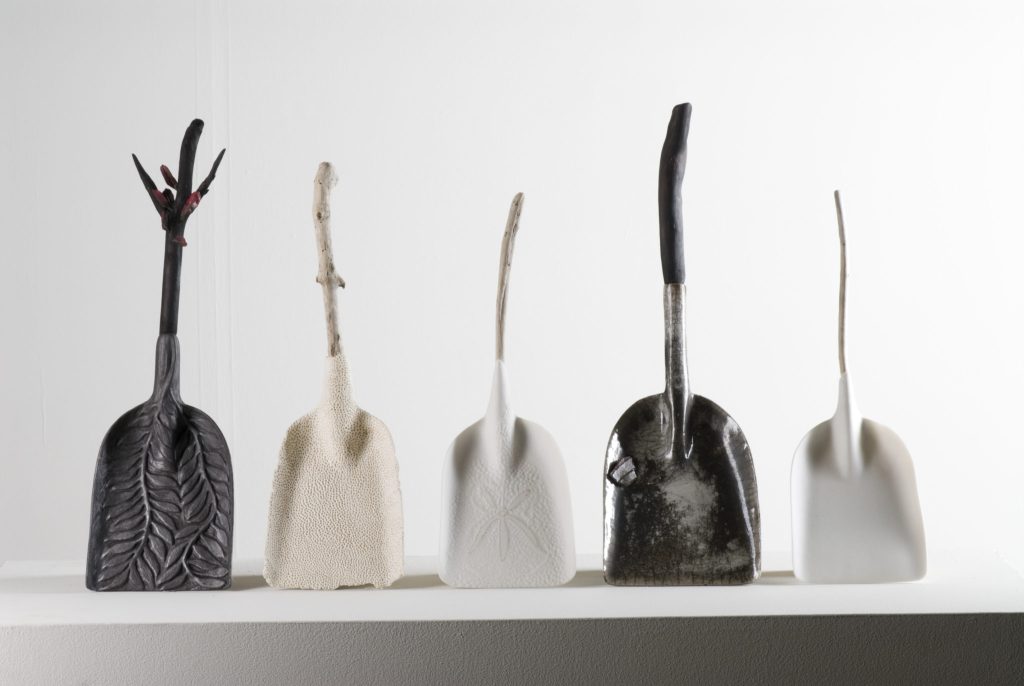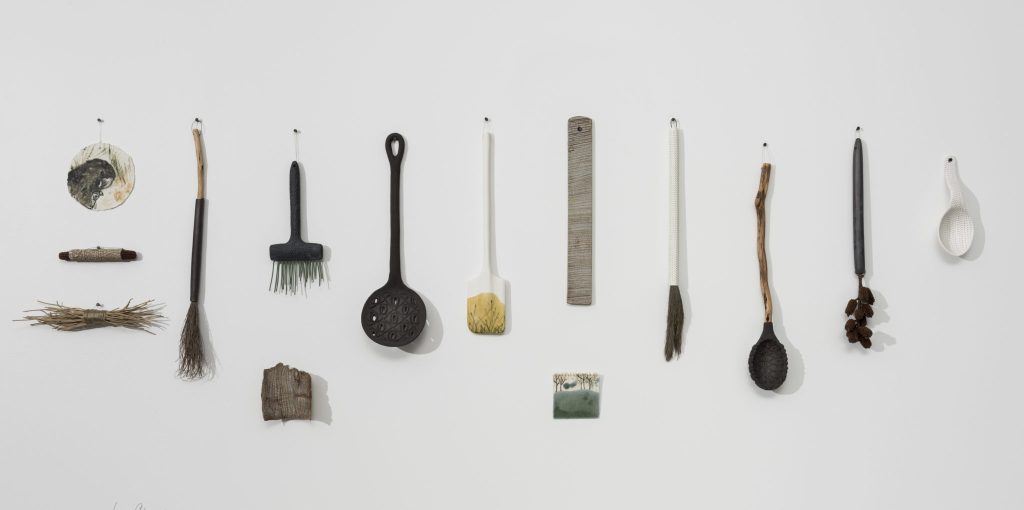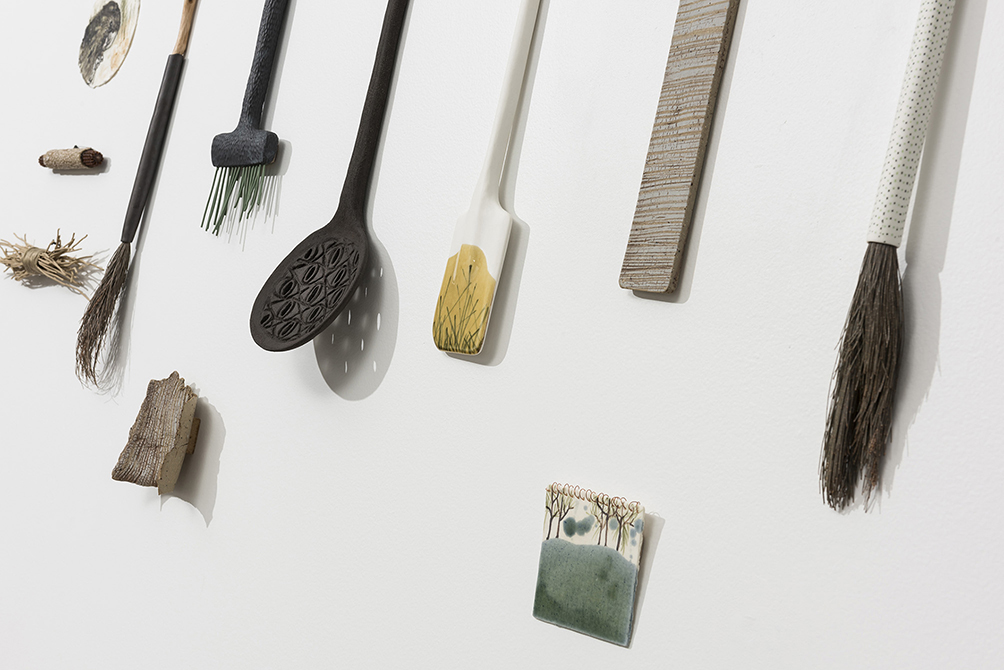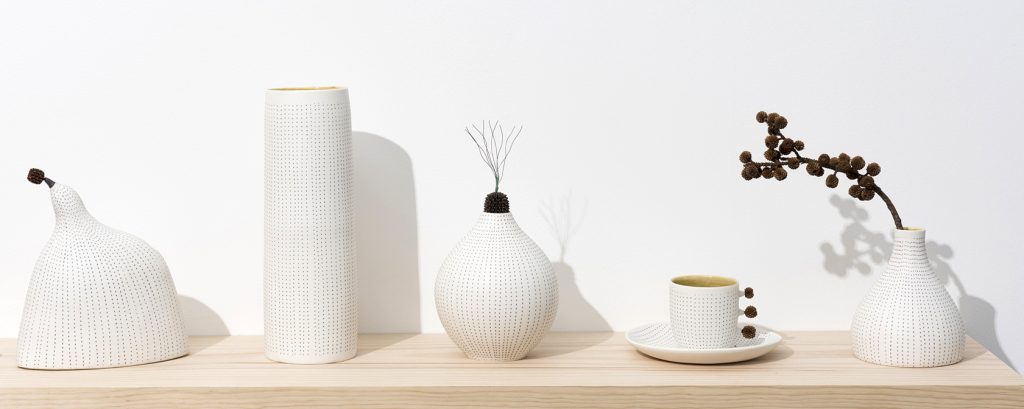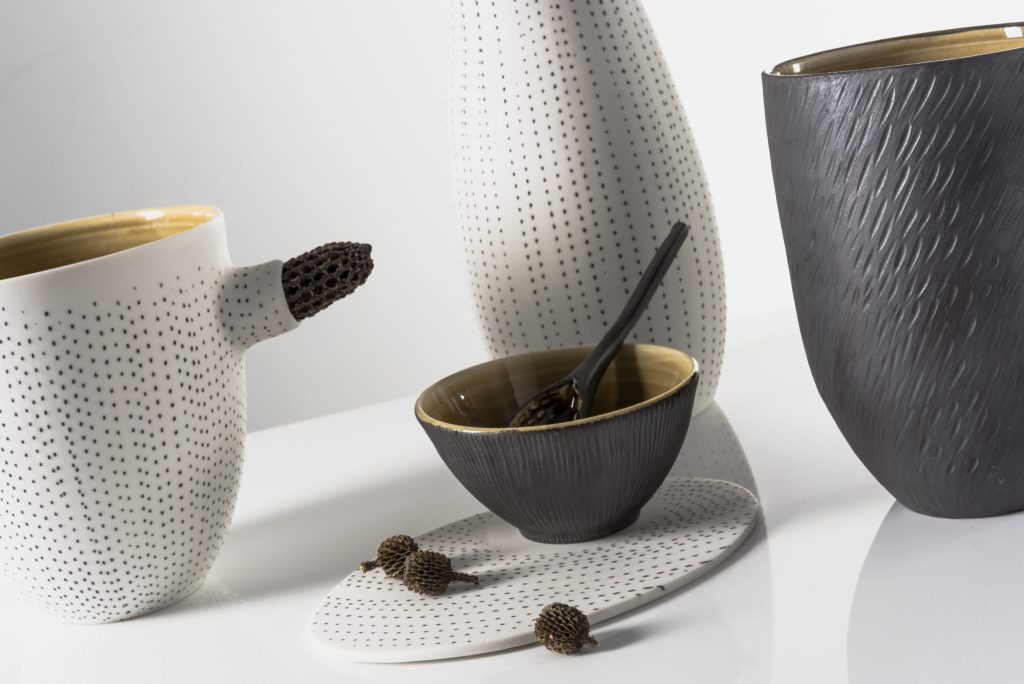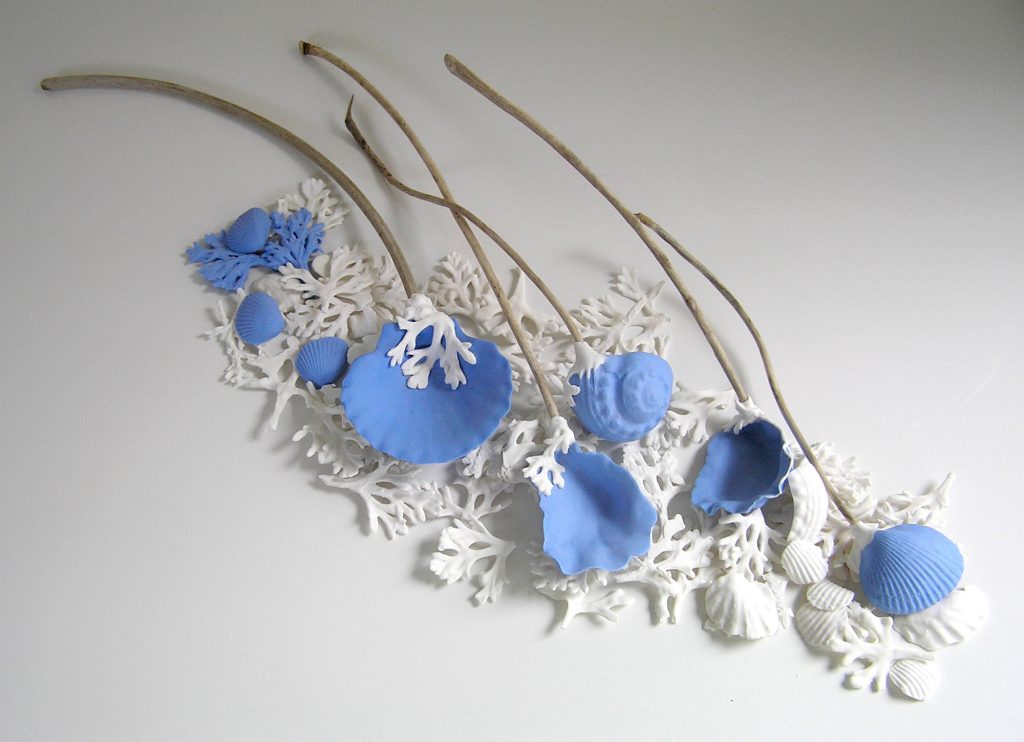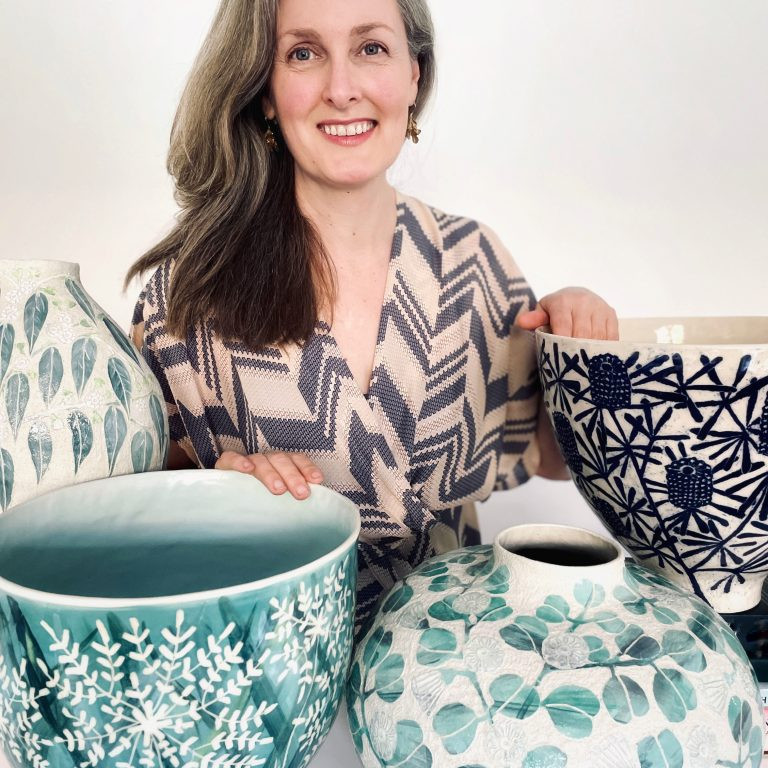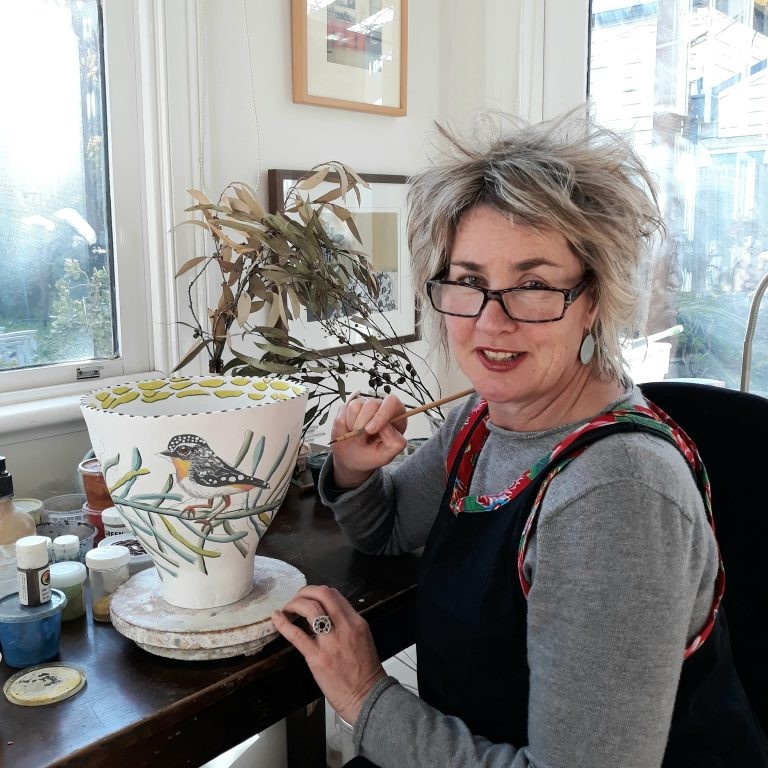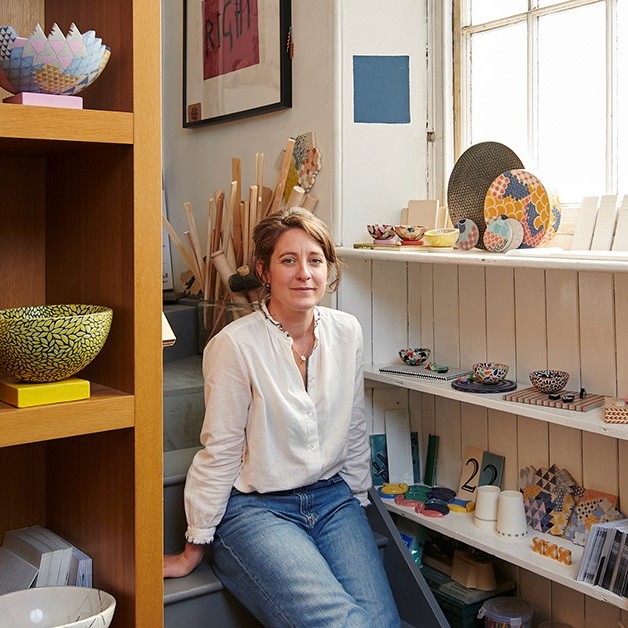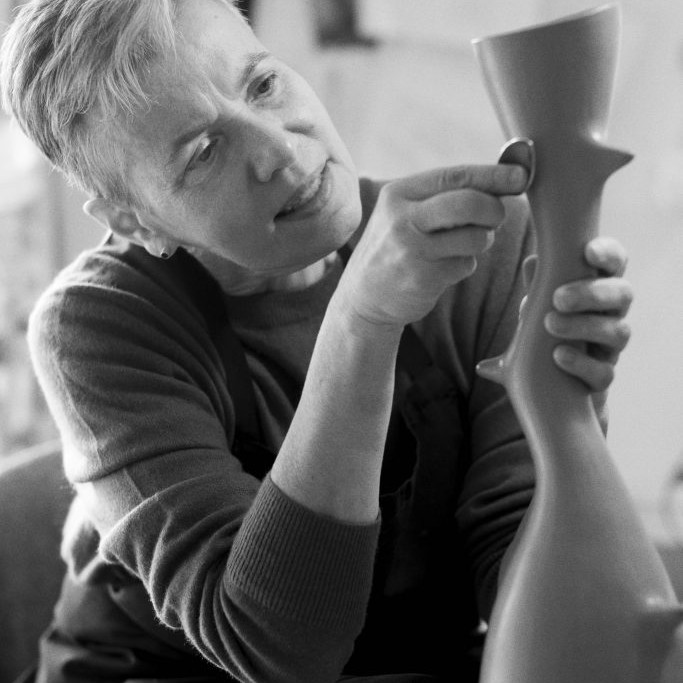Helen Earl Ceramic Artist - Sydney, Australia
You currently are currently exhibiting work as part of The North Head Project curated by Katherine Roberts at Manly Art Gallery & Museum. Can you explain the process that takes place to produce artworks for a curated exhibition that respond to place?
This exhibition emerged from a partnership between Manly Art Gallery & Museum and the Q Station. Ten artists were invited to consider the entirety of the North Head area that is situated on the northern headland at the entrance to Sydney Harbour. It is a large area with a complex Indigenous and cultural heritage, environmental significance, military history and unique migration and quarantine stories.
The artists were brought together in February 2017 for two days, staying overnight in the old nurses quarters of the Q station. During that time stakeholders from the Aboriginal Heritage Office, Manly; the Sydney Harbour federation Trust, North Head Sanctuary Foundation, Q Station Manly and NSW National Parks & Wildlife Service led the artists all over the site. We descended underground into the old military tunnels, visited the historic quarantine facilities and walked amongst the endangered ecological community, The Eastern Suburbs banksia scrub, (ESBS).
The experience was an invaluable immersion for developing a conceptual response to the site and the multiple narratives it presents. Being together with other artists heightened the experiential response to the site.
The exhibition opened on December 8 and it runs until February 18, 2018. I am exhibiting 5 works.
Stripped Bare, photo by Greg Piper
Stripped Bare, is a response to the practice of cleansing newly arrived immigrants with hot water infused with carbolic acid (phenol). The old quarantine station shower block is a sparse, institutional building. Carbolic acid is a skin irritant that on contact with the skin causes whitening of the exposed area and subsequent peeling.
Stripped Bare, detail, photo by Greg Piper
Skin Deep responded to the eerie ghost tour experience and subsequent research about the old hospital and morgue. Knowledge of the causes, methods of transmission and the treatment of infectious diseases was scant in the nineteenth century. Diagnosis of diseases such as cholera, typhus, scarlet fever, measles, smallpox and bubonic plague was based on physical symptoms and skin appearance.
Skin Deep, detail, photo by Greg Piper
In Memoriam reflected on the idea of absence and presence of past lives – the original aboriginal inhabitants, the immigrants who died of disease and Australians who served in wars but never came home to rest.
In Memoriam, Installation, 550 x 750 x 2000cm
In Home dressing table heirlooms packed in an immigrants suitcase become poetically entangled with North Head Sanctuary indigenous botanical and animal forms. I suggest to the viewer that creating a new home in a new place can displace the homes of other species or alternatively subsequent generations of immigrants come to love a new land and the objects inherited are mere relics of the past. The North Head Sanctuary is a tangible reminder of the Eastern Suburbs Banksia Scrub (ESBS) ecological community. Home is a reminder that a safe habitat is important for all life and finding solutions to preserving biodiversity should become part of our daily rituals.
Home
How much lead time to you usually need for an exhibition?
Anywhere between three months to a year as I like to have plenty of time to do background research about an initial idea I might have. In my research I am looking for the small or perhaps incidental historical, scientific or environmental narratives in order to reflect upon grander narratives of our cultural life today and the natural world in which we live
What is your criteria for an exhibition?
An interesting brief or space or place where I can make whatever I feel like.
Expand on the use of found objects (natural) as part of your ceramics practice.
The found object is always a referent to time and place and has it’s own history. The natural object references deep time, the time it takes for a seed to germinate, grow into a plant or tree, maybe suffer a storm event and drop a branch that floats down a river and gets washed out into the sea and then washed back onto a beach near or far. It already has a story that is just waiting to be told in conjunction with my experience of a particular time and place.
How has one of your beachcombing pieces lead to a completed art piece?
Midden spoons, one of my earliest works using driftwood I collected on my favourite beach on the mid coast of NSW references the complex cultural history of the first settlement of Sydney and colonial misinterpretation of the cultural practices of indigenous people.
Midden Spoons
Very little physical evidence remains of the Cadigal people, the coastal indigenous inhabitants who were the original custodians of the land on which the Botanic Gardens Sydney is sited. The Cadigal based their subsistence economy and cultural practices on the use, access, sharing and trading of marine resources. It was a highly cultivated relationship with the environment.
These marine resources provided food, tools, utensils and body adornment. Marine life was an integral part of their spiritual connection to the land.
Shell middens are the remains of seafood meals eaten by coastal Aborigines. Middens are usually found in easily accessible places where there are plenty of shellfish. One can surmise that the shoreline of the Botanic Gardens Sydney had middens because map evidence suggests that lime kilns existed near the Sydney Opera House Gate. Shells were roasted to make lime for mortar used in constructing building works and middens were an easily accessible source of shell material.
In the work, Midden Spoons the objects are arranged scattered like shells in a midden pile. The use of handles of found sea soaked plant material suggests to the viewer the interconnection of land and sea in the daily lives of the Cadigal. Alternatively, the spoon form suggests the early attempts of the British to civilise some of the original inhabitants, such as Arabanoo who dined with Governor Philip. In 1789, Arabanoo died of small pox infection and was buried in the Governor’s Garden.
Your series Dustpans, expand on the relationship of this work to the environment.
The dustpans were part of my Masters by Research body of work. I view the dustpans as liminal objects that suggest the interrelationship of two realms of lived experience. I use the dustpan and other tool forms as poetic metaphor for connection to the environment.
The overlapped and inserted imagery of ordinary tools and tasks with fragmented imagery of the natural world in my artwork is designed to prompt the viewer to recall their own experience of natural environments.
Dustpans for Oceanic Oil Spills – Bushfires, Photo by Greg Piper
The dustpan and its companion brush are familiar tools in the landscape of human endeavour. Dustpans are a domestic and industrial work tool used to collect debris that has accumulated on a floor or pathway. A dustpan and brush is an invaluable tool for cleaning up anything as harmless as toast crumbs to extreme hazards such as spilt mercury. The dustpan form is essentially a projection and technological mimesis of a cupped hand.
After The Fire dustpans were in response to a controlled burning of the bushland adjoining my home. There is much beauty in a burnt landscape after fire where the dense undergrowth has been swept away by flames, seemingly magically replaced by a black and white carpet of burnt material and the furniture forms of tree trunks and sandstone boulders. Bushfires are part of Australian domestic life. Many Australian species of plants need fire to enact the release of their seed and yet the devastation to human life and property in an intense fire event is heart wrenching.
The After the Oil Spill dustpans were in response to an article published about a locality in Japan affected by a massive oil spill back in 2009. The local people so distressed by the enormity of the disaster rushed to help authorities clean up the mess and used their own buckets and dustpans to help clean their beach and waters. I made these dustpans pure and white or full of holes as covered in black oil it would suggest the futility of human endeavour in the face of large scale environmental disasters.
Explain your work Auntie’s Kitchen and the combination of The Botanical Gardens, Sydney and the humble Casuarina and Allocasuarina?
Auntie’s Kitchen refers to narratives of human interaction with the genus of trees, Casuarina and Allocasuarina, both commonly referred to as the She-Oak. The tool and utensil form again become a poetic metaphor for the concept of connection by exploring the idea of sustenance within our daily lives and the natural world.
Auntie’s Kitchen, Photo by Greg Piper
According to the Australian Government’s department of Environment and Energy, approximately 17,000kms of Casuarina forest has been cleared since European settlement yet the various species of the genus are important to sustaining biodiversity in the Australian landscape.
Auntie’s Kitchen,detail, Photo by Greg Piper
The idea for this series first began when I was Artist in Resident at the Botanic Gardens, Sydney. I was told that the Casuarina glauca trees that grow in the Botanic Gardens Sydney are ‘suckers’ from the original shoreline vegetation that pre-date settlement by Europeans. As very little evidence remains of the original inhabitants of this area, the Cadigal people, the trees are a tangible link to a previous history of nature and culture.
It is said that the British Flag was first raised on the trunk of a Casuarina tree but was cut down much to the dismay of Governor Macquarie. The wood of the tree was the preferred material for roof shingles in the early years of settlement. Although not the original roof shingles, Cadman’s Cottage in the Rocks area of Sydney (one of the oldest residential building in Sydney) has a roof made from forest She-Oak. The works, Stumpy Brush and Bark Shingle reference the idea that colonisation ‘redecorated’ the landscape of Australia clearing the bushland and creating a more European centric view of landscape. There are other narratives of interconnection I have addressed in this body of work such as the fact that endangered Glossy Black Cockatoo feeds only on certain species of Casaurina trees or how they mark the Springtide line warning people not to build too close to the coast and risk loosing homes in major storm events.
Can I use your video? Could you please introduce it to the readers, remember this is a world audience?
This film was made to support the Australian Design Centre exhibition, Clay Intersections. It presented work by eight contemporary makers who take a range of innovative approaches to making and working with clay. The exhibition is going to become a touring exhibition to regional galleries in NSW & ACT over the next two years. The Hawkesbury Regional Gallery is the first on the February 9, 2018. I am currently making a whole new body of work, Auntie’s Kitchen 2 and new She Oak vessels for the travelling exhibition.
Clay Intersections: Helen Earl on Vimeo
https://vimeo.com › Australian Design Centre › Videos
Discuss the importance of excellent photography?
Excellence of the photographic image is important to do justice to hours spent toiling in the studio. It is expensive to get professional images taken of one’s work and it is often done before the work is fully completed if it forms part of the publicity for an upcoming exhibition. For me this can be a problem in terms of deadlines as each work I make is unique. I also find now it is important to take images of the work installed in the exhibition space as this can provide imagery for use on your website and applying for other exhibitions or residencies.
She Oaks Vessels 2 photo by Greg Piper
How you choose a photographer?
Word of mouth and a look at some of their images taken of other object makers artwork.
How much are you involved in the process?
I usually hang around in the studio or exhibition and assist the photographer.
She Oaks Vessels 1 photo by Greg Piper
Explain your connections with Josiah Wedgewood, Sir Joseph Banks and Governor Phillips and how these three famous men lead to a combination of the past and your modern art practice?
During my residency at the Botanic Gardens, Sydney I read many historical accounts of early Sydney as the Gardens was the first site of settlement. I was fascinated as am artist who works mostly in clay to discover that in 1788 Governor Phillip had clay dug from the foreshores of Sydney Harbour and exported to his friend Sir Joseph Banks. Banks in turn, sent the clay samples to his friend, Josiah Wedgewood. In 1789, Wedgewood produced what is now known as The Sydney Cove Medallions in pale cream, brown and black. The colours reflected the different clay samples collected.
Sydney Cove medallion, 1789 by Josiah Wedgwood State Library of New South Wales
In the artwork, Tideline I reference this connection but also question the colonial attitude to land and resources. Components in the artwork appear like wrack washed up by the sea. The porcelain spoons of blue clay with white sprigging are an appropriation of Josiah Wedgewood’s iconic Jasperware, which he developed in the 1770s. The blue and white is not the colour of the land but references the flotsam and jetsam of the colonial conquerors sailing into Sydney Harbour.
Tideline
The porcelain detritus is composed of shell fragments and the leaves of Actinotus helianthi, the flannel flower one of the species of flora collected by Banks (a good friend of Wedgewood) and Solander at Botany Bay in 1770.
A tideline is the mark or line left by the tide when it retreats from its highest point and Australia has long been a nation in its own right. Australia, however, is still marked by the colonial stains of the past and these narratives of historical interconnection speak of two very different attitudes to land and resources that still resonate within Australia today.
Contact details:
Helen Earl
https://australiandesigncentre.com/clay-intersections/
Helen Earl, Sydney, Australia
Interview by Deborah Blakeley, January 2018
Think a colleague or friend could benefit from this interview?
Knowledge is one of the biggest assets in any business. So why not forward this on to your friends and colleagues so they too can start taking advantage of the insightful information the artist has given?
Other artists you may be interested in:




